A lot of players – good, solid, dependable players – had careers that were cut short by injuries. A number of star players never reached their full potential statistically because of games missed due to injury. This isn’t a story about them. This is a story about star players who left the game too early, at ages when they still should have had lots of seasons left to play.
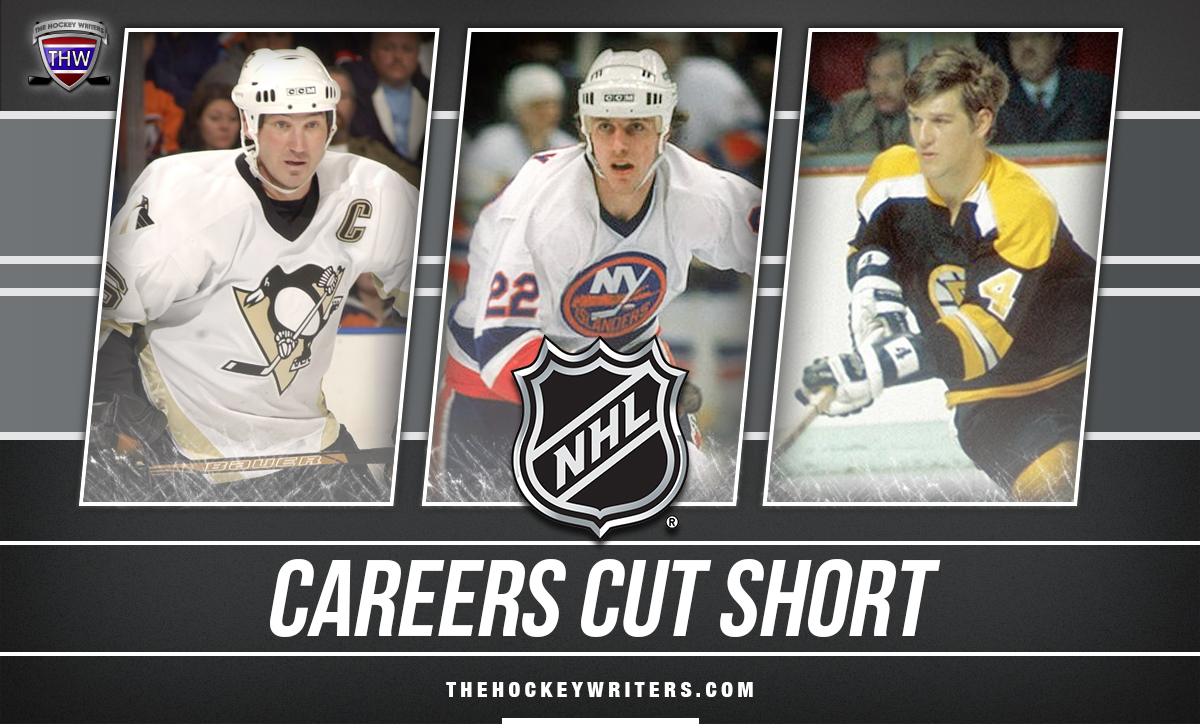
From knees to concussions to cancer to automobile accidents, some great NHL players have had their careers ended prematurely. Despite career-ending injuries and chronic conditions, five of the seven players on this list are members of the Hockey Hall of Fame. Just imagine what they could have accomplished if health and luck had been on their side!
Seven Careers That Ended Too Soon
Putting this list together was not an easy task. Limiting it to seven players was even tougher. The difference between careers cut short by injury and careers that were hampered by injury will likely be at the foundation of discussions to come.
But here are seven NHL careers that would have been even more spectacular had they not been ended early by injuries, illness, or accidents.
7. Cam Neely
Power forward Cam Neely’s first three seasons with the Vancouver Canucks (who selected him ninth overall in the 1983 Entry Draft) certainly didn’t forecast what would come following his trade to the Boston Bruins. From 1983-84 through 1985-86, he played primarily on Vancouver’s third line, with limited power play opportunities. (Time on ice per game was not yet a recorded statistic in the NHL.) In 201 games with the Canucks, he scored 51 goals and racked up a minus -54.
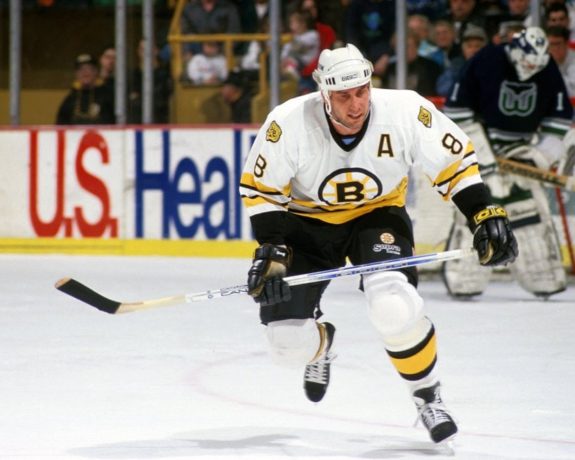
Over the next five seasons with the Bruins, he played 363 games, scoring 221 times and recording a plus-102. Neely twice broke the 50-goal barrier during this pre-injury period of his Bruins career. However, the glory days would start to spin down, starting with the 1991 playoffs, during which he suffered a pair of knee injuries in the Prince of Wales Conference Finals.
Beginning with the 1991-92 season, Neely played nine, 13, 49, 42, and 49 games. That’s 162 regular-season games over five seasons, during which he scored a total of 123 goals and recorded a plus-35. He added six goals in nine playoff games over those five seasons. In contrast, his first five years in Boston included 49 goals in 77 playoff games.
Neely’s Jekyll-and-Hyde Bruins career
While it’s easy to split Neely’s 10 seasons with the Bruins into those two tidy five-year sections, that wouldn’t be a completely accurate picture. In 1993-94, Neely reached 50 goals in just 44 games, the second-fewest games to 50 goals behind only Wayne Gretzky. (The statistic is not official because it occurred in Neely’s first 44 games, not the team’s first 44 games.) That performance earned him the Bill Masterton Memorial Trophy for perseverance, sportsmanship, and dedication to ice hockey.
Eventually, however, Neely was forced to retire due to hip problems that likely stemmed from the earlier knee injuries and calcification of muscle tissue. He was inducted into the Hockey Hall of Fame in 2005, some six years after he was first eligible.
What Neely Might Have Done
To see what could have been, let’s take Neely’s five prime years and project them over his 13-year career. His goals-per-game average during the five best years was just under 0.61 (221 goals in 363 games). He averaged 72.6 games per season. Extrapolating those numbers over 13 years gives us 944 games and almost 575 goals. That goal total would vault him from #103 (tied) to #22 on the all-time NHL goals list. Extrapolating his playoff goals from 57 in 77 games to 127 in 200 playoff games would move him from #42 to #1 (ahead of even Wayne Gretzky) on the career playoff goal list. And let’s not overlook a projected plus-265.
Related: The Finishers: NHL’s All-Time Highest Goals-to-Assists Ratios
Remember, too, that Neely retired at age 31. Had his career not been cut short by injury, he might have played another four seasons (consider that the player drafted five places before him in 1983, Steve Yzerman, played 22 seasons. Pat LaFontaine was also drafted that year, third overall, and had his career derailed by injuries – after 15 seasons.) If we project a drop in Neely’s goals-per-game from 0.61 to 0.45 over four additional seasons, we’re still adding another 130 goals for a projected career total of some 700 career regular-season goals (with a plus/minus somewhere in the neighborhood of plus-300.) But the injuries did happen, and the Bruins (and hockey fans) were robbed of what could have been a top-10 goal-scoring career.
Neely’s Accolades
In addition to the 1993-94 Masterton Trophy, in 2010 Neely was honored with the Lester Patrick Award by the NHL and USA Hockey. He played in five All-Star Games and was named to the NHL All-Star Second Team four times. His regular-season performances included:
- He finished the regular season top-10 in goals scored four times.
- He led the league in power play goals in 1994-95.
- He led the league in game-winning goals twice (12 in 1989-90, 13 in 1993-94).
- His 27.0 shooting percentage was tops in the NHL in 1993-94.
- Four times he finished the season top-10 in hat tricks.
- In 1993-94, his 1.02 goals-per-game average was first in the league.
- That same season, he finished second in points-per-game average.
Even in his injury-shortened seasons of 1993-94 and 1994-95, Neely was a force to be reckoned with. Playing at 100% for 15 or 13 or even just 10 seasons, his reputation as a prototypical power forward might have been unmatched in the history of the NHL.
6. Pavel Bure
Known as “The Russian Rocket,” Pavel Bure was one of the most accomplished goal scorers of his day. Selected #113 in the 1989 NHL Entry Draft by the Canucks, the speedy wing didn’t start his NHL career until the 1991-92 season — questions of eligibility delayed his debut. His career was also interrupted by a groin injury that hampered him for half of the 1993-94 season, the 1994-95 NHL lockout (and a short holdout following the lockout over a contract dispute), the first of several knee injuries during the 1995-96 season, a neck injury the following season, and another contract dispute that saw him hold out for half of the 1997-98 season.
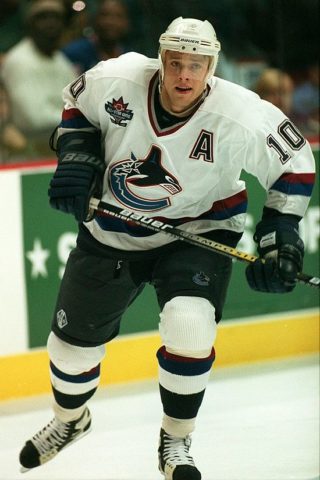
Another pair of knee injuries in 2002-03 resulted in surgery, which would cost him part of that season and all of the following season. The second lockout of the era also wiped out the entire 2004-05 season. Bure officially retired in November 2005, stating that his knees would no longer allow him to play at the elite level he demanded of himself.
Bure’s Best
When healthy (and not holding out in a contract dispute), Bure was an unstoppable goal-scoring wizard. He hit the 60-goal mark in both 1992-93 and 1993-94 (a season in which he led the league). He captured the Maurice Richard Trophy as the league’s top goal scorer in 1999-2000 (58 goals) and the following season (59 goals). In 702 NHL games, he scored 437 goals. His 0.623 goals per game average is fifth all-time, trailing only Mike Bossy and Mario Lemieux in the modern era and ahead of Gretzky, Brett and Bobby Hull, and Tim Kerr.
Related: Pavel Bure – A Tribute to the Russian Rocket
Bure set and/or holds a number of records for the Canucks. He was the first Canuck to win a major individual trophy (the Calder Trophy in 1992). He set the club record for goals by a rookie with 34. In 1992-93, he became the first Canuck to top 50 goals and 100 points in a season (60 goals, 110 points). In 1993-94, he set a team record with 25 power play goals in a season (tying Brett Hull for the league lead that year). In four straight seasons (1991-92 through 1994-95), he was named the Canucks’ “Most Exciting Player.” And those team achievements and accolades are just the tip of the iceberg.
Bure’s Awards and Trophies
Bure’s NHL accolades included the Calder Memorial Trophy (1992), his pair of Maurice Richard Trophies (2000, 2001), and seven All-Star selections. He was inducted into the Hockey Hall of Fame in 2012, his sixth year of eligibility.
It would be an injustice to exclude Bure’s international career when discussing his potential:
- Bure won the gold medal at the 1989 World Junior Championship. He skated primarily on a line with Sergei Fedorov and Alexander Mogilny for the Soviet Union and was named the top forward for the tournament.
- He earned silver medals at the 1990 and 1991 World Junior Championship. During those same two years, he also won gold at the 1990 World Championships and bronze the following year.
- He won silver at the 1998 Winter Olympics with the Russian team, scoring five goals in the semifinal against Finland and led all scorers with nine goals. Despite not winning gold, he was named the top forward of the tournament.
So much promise and so many acomplishments in so few years.
5. Vladimir Konstantinov
Of the players on this list, Vlad Konstantinov’s career suffered the most spectacular and tragic ending. Just days after his Detroit Red Wings raised the Stanley Cup in 1997, he was permanently paralyzed in a limousine crash. Before the crash, he’d been a mainstay on the Red Wings’ blue line and, despite playing an extremely physical style, he’d missed only 14 games in his six seasons in Detroit.
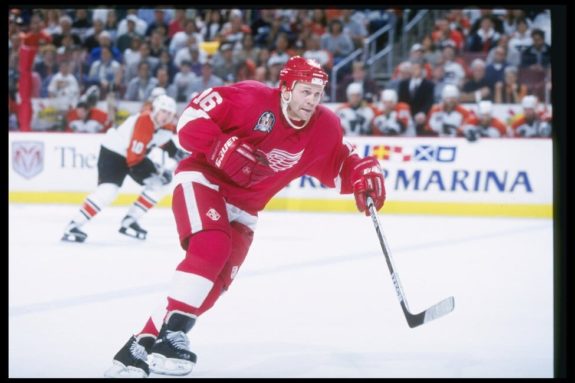
Before the age of 20, Konstantinov had already played over 100 games with CSKA Moskva, one of the top teams in the Soviet Union’s top league (which eventually became today’s KHL). In 1986 he won a gold medal at the World Junior Championship and a gold medal at the men’s World Championship. Winning double-gold in a single year is extremely rare.
Drafted in the 11th round (#221) by Detroit, trouble getting out of the Soviet Union delayed his start in the NHL for two years. The process reflected the cloak-and-dagger ways of the late Cold War, including fake doctors’ reports claiming terminal cancer and private planes to whisk him away.
Related: Time for Red Wings to Retire Konstantinov’s No. 16
Following his first NHL season in 1991-92, Konstantinov and fellow Red Wings defenseman Nick Lidstrom were named to the All-Rookie Team. In the 37-year history of the All-Rookie Team, only four other Red Wings have been named to the All-Rookie Team: Steve Yzerman (1983-84), Sergei Fedorov (1990-91), Henrik Zetterberg (2002-03), and Jimmy Howard (2009-10). Being a member of that elite club with Yzerman, Fedorov, Lidstrom, and Zetterberg (oh, and Howard too) speaks worlds about how Konstantinov’s career was expected to progress.
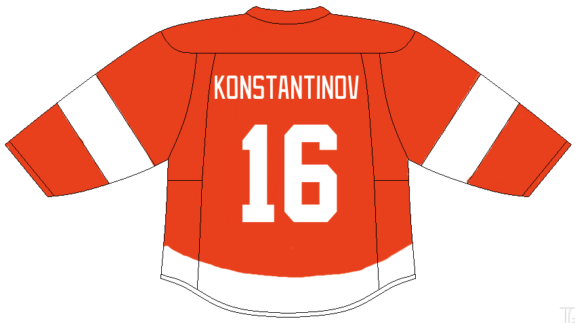
In terms of play on the ice, Konstantinov is best remembered for his role in Red Wings coach Scotty Bowman’s innovative “Russian Five.” As the hard-hitting, solid defenseman, he and defense partner Slava Fetisov anchored the high-flying group. (There’s even a movie about the Russian Five.) He’s also memorable for the nicknames “Vlad the Impaler” and “The Vladinator.”
Konstantinov’s Performance
Here are just a few of Konstantinov’s accomplishments during his tragically short NHL career:
- In 1995-96, he recorded a plus-60 for the season. That was the highest plus/minus since Wayne Gretzky’s plus-70 in 1986-87. The best plus/minus recorded since Konstantinov’s plus-60 is plus-52 (three times).
- In his 446 NHL games, his cumulative plus/minus of plus-185 was higher than his career point total (175), but dwarfed by his penalty minutes total (838).
- He scored only 47 goals in the NHL, 17 on the power play and four shorthanded, but an amazing eight of his 47 goals were game-winners.
- One of his four playoff goals (in 87 games) was also a game-winning goal.
- Following the 1995-96 season, Konstantinov finished 4th in voting for the James Norris Trophy, ahead of teammates Paul Coffey (5th) and Lidstrom (6th). The winner that year? Future Red Wing Chris Chelios.
- He finished 2nd in Norris voting, behind only trophy-winner Brian Leetch in 1996-97. That was Konstantinov’s last season on the ice.
The limo accident that ended Konstantinov’s career also crippled Red Wings’ team masseur Sergei Mnatsakanov and injured Fetisov. Writing about the accident 20 years later, Ted Kulfan of The Detroit News had this to say about Konstantinov:
A potential Norris Trophy-winning player, Konstantinov was a star player at age 30 who could have extended and strengthened the Red Wings’ then-dynasty, and enjoyed a potential Hall of Fame career.
—20 years later, Wings recall ‘unbelievable tragedy,’ Ted Kulfan, 6/12/17
Igor Larionov, nicknamed “The Professor” for his incredible hockey I.Q., was perhaps even more complimentary when talking about Konstantinov with Detroit Free Press writer Jeff Seidel.
The team would have won two or three more Cups in a row, because he was a very important part of that team.
— “Vladimir Konstantinov and his untold battle after fateful limo crash,” 10/4/19
Following the end of Konstantinov’s career, Lidstrom would go on to win seven Norris Trophies and finish top-five in voting another six times in 14 years. Could “Vlad the Impaler” have given him a run for his money in those Norris votes? We’ll never know.
4. Tim Kerr
An undrafted free agent signed by the Philadelphia Flyers before the 1980-81 season, Tim Kerr started his NHL career with more penalty minutes than points. With 222 PIMs and 96 points, his first two years with the Flyers were certainly flashy but didn’t show his full potential. His third season was disrupted by knee injuries and a broken leg. In 1982-83, he played only 24 games (11 goals, 19 pts, 6 PIMs). The next four seasons (1983-84 through 1986-87) showed the NHL what should have been.
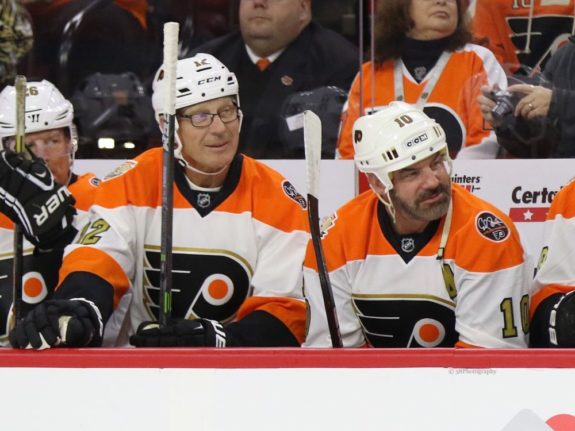
Kerr played over 70 games each of those four seasons and topped 50 goals every time. In 304 games, he scored 224 goals and totaled 370 pts (with 222 PIMs). Then the injuries started to pile up. He appeared in only eight games during the 1987-88 season. He bounced back briefly in 1988-89, winning the Masterton Trophy by scoring 48 goals in 69 games. That would be the last time he played more than half of a season.
Kerr’s career wound down with two more seasons with Philadelphia, in which he scored 34 goals in 67 games (40 games and 24 goals, followed by 27 games and 10 goals). He then played one season with the New York Rangers (32 games, 7 goals) and a final partial season of 22 games (zero goals) with the Hartford Whalers.
Kerr Really Could
In addition to 370 goals in 655 regular-season games, Kerr scored 40 goals in 81 career playoff games (all but eight games and one goal with the Flyers). Despite his injury problems, he finished his career ranked in the top 10 in goals per game (minimum of 500 games) and second all-time in shooting percentage (minimum 40 goals).
If we extrapolate a career unhindered by injuries and based on his four near-full seasons, it paints a picture of a true superstar. His actual NHL career numbers are 13 seasons, totaling 655 games (an average of only 50 games per season), with 370 goals and 674 points. If he had been physically able to play all 13 seasons the way he played in his prime, we’d see career numbers of 988 games with 728 goals. Since he was forced to retire at age 33, let’s add in a couple of more productive years and guesstimate a career of over 1,100 games and perhaps (conservatively estimating) 815 goals. Using those numbers, Kerr would jump from #130 all-time in goals scored to #2, trailing only Wayne Gretzky.
Kerr’s Lack of Recognition
Despite the numbers he racked up before the injuries piled up, Kerr has a rather empty trophy case. Yes, he won the Masterton Trophy in 1988-89. Yes, he played in three All-Star Games (1984, 1985, 1986), and yes, he was named to the NHL Second All-Star Team in 1987. He was inducted into the Flyers Hall of Fame in 1994. But he is not a member of the Hockey Hall of Fame. (At least not yet – under certain circumstances, players eligible for at least 15 years can be selected under the HHOF Election Procedures.)
3. Mario Lemieux
Where do you start when summarizing Mario Lemieux’s career? Perhaps with a comparison to The Great One. Gretzky and Lemieux. Number 99 and number 66. Their careers overlapped for 15 years, but only a dozen NHL seasons. Lemieux played in 915 NHL games over 17 seasons; Gretzky had 1,487 games over 21 seasons. Lemieux scored 690 goals and 1,723 points; Gretzky scored 894 goals and 2,857 points.
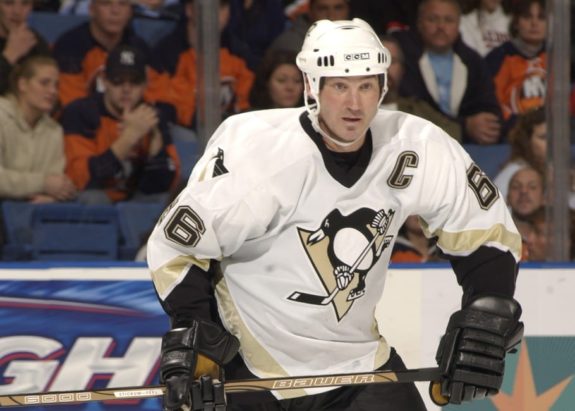
Other than the illness and injury factors, there’s one major difference between their time in the NHL: Lemieux played his entire career for the Pittsburgh Penguins, while Gretzky made his mark first in Edmonton with the Oilers, then again in Los Angeles with the Kings, and a third time with the New York Rangers. (Oh, and there was that little side trip of 18 games with the St. Louis Blues between his stops in LA and NYC.)
Had Lemieux played every game between his debut in 1984 and the end of the 2005-06 season, during which he retired permanently, he would have appeared in 1,430 games. If we pro-rate his goals and assists from his actual 915 games to 1,430 games, he would have scored 1,078 goals and recorded 2,693 points. But those injuries and illnesses did, in fact, limit him to less than two-thirds of that number of possible games – 915 games, with 690 goals and 1,723 points.
Related: Gretzky vs Lemieux: Head-to-Head
“Super Mario” suffered from a variety of injuries and ailments during his playing days. Most notably, he left hockey to undergo radiation therapy for Hodgkin’s lymphoma and suffered a series of back injuries. He twice underwent major back surgery in July 1990 and again almost exactly three years later. Radiation-related fatigue forced him to miss the 1994-95 season. His ongoing health issues forced him to retire following the 1996-97 Stanley Cup Playoffs.
The Hockey Hall of Fame waived the standard three-year waiting period to induct him that summer. Two years later, in 1999, Lemieux became part owner of the Penguins, helping to rescue the organization from bankruptcy and probable relocation.
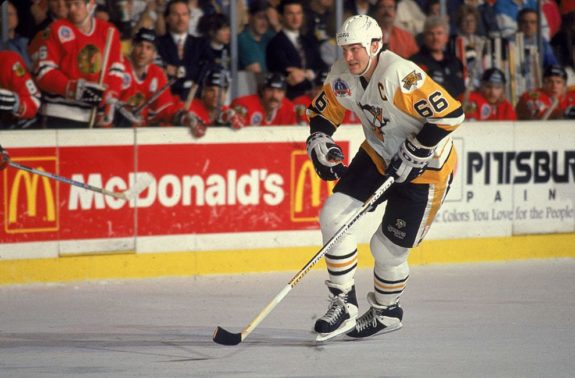
Lemieux returned to the ice during the 2000-01 season, becoming the third player to resume his NHL career following induction into the Hall of Fame, as had Gordie Howe and Guy Lafleur. He finally retired as a player for good on January 24, 2006. (The missing three-and-a-half seasons between his first retirement and his return to the ice are the difference between “a career cut short” and “injuries that hampered a career.”)
Lemieux and Gretkzy, Sharing Trophies
Between 1981 and 1997, a span of 17 NHL seasons, the Art Ross Trophy (awarded to the NHL regular-season scoring leader) was presented to Gretzky or Lemieux 16 times (Gretzky 10, Lemieux six). In fact, to see how Lemieux and Gretzky compared in the hardware department during the years that their careers overlapped, take a look at this table:
| Season | Art Ross Trophy | Lester B. Pearson Award* | Hart Memorial Trophy | Conn Smythe Trophy | Lady Bing Memorial Trophy | (Maurice Richard Trophy)** |
| 1984-85 | Gretzky | Gretzky | Gretzky | Gretzky | Gretzky | |
| 1985-86 | Gretzky | Lemieux | Gretzky | |||
| 1986-87 | Gretzky | Gretzky | Gretzky | Gretzky | ||
| 1987-88 | Lemieux | Lemieux | Lemieux | Gretzky | Lemieux | |
| 1988-89 | Lemieux | Gretzky | Lemieux | |||
| 1989-90 | Gretzky | |||||
| 1990-91 | Gretzky | Lemieux | Gretzky | |||
| 1991-92 | Lemieux | Lemieux | Gretzky | |||
| 1992-93 | Lemieux | Lemieux | Lemieux | |||
| 1993-94 | Gretzky | Gretzky | ||||
| (1994-95) | ||||||
| 1995-96 | Lemieux | Lemieux | Lemieux | Lemieux | ||
| 1996-97 | Lemieux | |||||
| (1997-98) | ||||||
| (1998-99) | Gretzky | |||||
| (1999-2000) | ||||||
| 2000-01 |
**-The Maurice Richard Trophy was first awarded in 1999, but this table shows the years in which Lemieux or Gretzky would have won the trophy.
Note: Lemieux was not active in the NHL during the 1994-95, 1997-98, 1998-99, and 1999-2000 seasons.
For a full description of each trophy and award, as well as the criteria used to determine the winners, see this page at NHL.com.
Lemieux won the Calder Memorial Trophy (“Rookie of the Year”) in 1984-85; Gretzky was not eligible for the Calder. Lemieux won the Bill Masterton Trophy in 1992-93; Gretzky’s career wasn’t interrupted to a degree that would have qualified him. Both Lemieux (2000) and Gretzky (1994) have received the Lester Patrick Trophy for “contribution to ice hockey in the United States.”
By the Numbers
Here are some of the other ways in which Lemieux and Gretzky are linked in the NHL record books:
- Lemieux is the only player other than Gretzky to score at least 199 points in a single season.
- They are the only players to score at least 70 goals in two or more seasons.
- They are the only players with points streaks of at least 46 games.
- Lemieux’s 44 playoff points in 1990-91 is second only to Gretzky’s 47 in 1984-85.
- Combined, Lemieux scored 78 points in the 1990-91 and 1991-92 playoffs, second only to Gretzky, who had a two-postseason total of 82 points in 1983-84 and 1984-85 playoffs.
- In the 1992-93 season, despite missing two months in the middle of the season to undergo radiation therapy, Lemieux recorded an average of 2.67 points per game. That pace is third in NHL history, behind Gretzky’s 2.77 p/gm (1983-84) and 2.69 p/gm (1985-86).
- Lemieux needed only 605 games to score 500 goals. That’s second in NHL history to, of course, Gretzky (500 goals in 575 games).
- Lemieux: 600 goals in 719 games; Gretzky 600 goals in 718 games.
Related: A Tribute to the Magnificent Mario Lemieux
You want more facts? Here’s some Mario Lemieux Trivia:
- Lemieux scored his first NHL goal on the first shift of his first game (October 11, 1984, vs. the Bruins).
- He is the only player to score 13 shorthanded goals in a single season.
- No other player has scored under all five circumstances in one game: even strength, power play, shorthanded, penalty shot, and empty net. That was a very special New Year’s Eve game in 1988.
- Less than five months later, on April 25, 1989, Lemieux had another five-goal game.
- When Lemieux announced his (permanent) retirement from his NHL playing career on January 24, 2006, it wasn’t due to back problems. Nor due to lingering fatigue from radiation therapy. His final departure from the ice was due to an irregular heartbeat.
- In September of 1999, Lemieux became the principal owner of the Penguins, leading to him becoming the first player/owner in the NHL when he came out of his first retirement 14 months later.
- “Mario Lemieux” is the only name inscribed on the Stanley Cup as both a player and an owner.
There’s one season in Lemieux’s career that will always stand out as lost possibilities. In 1992-93, he played in only 60 of 84 games, scoring 69 goals and 160 points. Had he played at the same pace for all 84 games, Gretzky’s single-season records for goals (92) and points (215) would have fallen. Pro-rated over 84 games, he would have scored 97 goals and 224 points.
If Lemieux could have combined his incredible skill set with the durability and longevity of, say, Gordie Howe, we might be asking, “Wayne who?” (Okay, well, we probably would not have forgotten Gretzky.)
2. Mike Bossy
There’s so much that can be said about Mike Bossy, but two facts that stand above the others: His career .762 goals per game is the highest in the history of the NHL (minimum 200 goals). His career ended far too early due to chronic back problems.
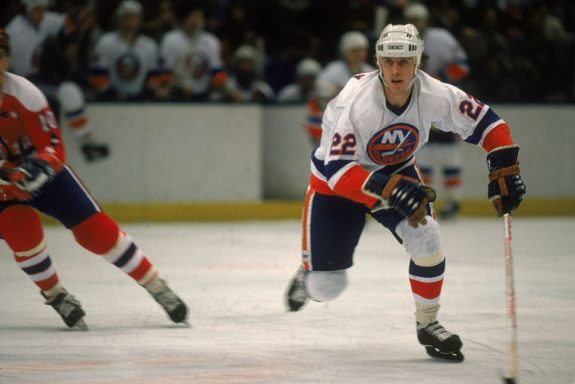
He was instrumental in the New York Islanders’ four consecutive Stanley Cups between 1979-80 and 1982-83, scoring the Cup-clinching goal in consecutive years (1982 and 83).
More Big Achievements from Bossy’s Limited Career
In addition to his four Stanley Cup rings, Bossy earned the Calder Trophy, the Conn Smythe Trophy (1982), and the Lady Bing Trophy three times (1982-83, 1983-84, 1985-86). He led the league in goals twice, was named an All-Star in the first eight of his nine seasons (five on the First Team). He was inducted into the Hockey Hall of Fame in 1991.
Related: Mike Bossy Joins the NHL 50 in 50 Club
And then there are more numbers to consider:
- Bossy scored at least 50 goals in nine consecutive seasons. While Gretzky also has nine 50-goal seasons on his resume, they were not consecutive. (Alex Ovechkin has eight 50-goals seasons – not consecutive – so far.)
- He topped 60 goals five times.
- In his Calder-winning rookie season, Bossy scored 53 goals, a rookie record that stood until Teemu Selanne smashed it to dust with a 76-goal rookie season in 1992-93.
- In 1980-81, he reached the magical “50-goals-in-50-games” mark. He was the first to accomplish the feat since Maurice Richard 36 years earlier.
- In addition to leading the league in goals twice, he topped his peers in power play goals three times and game-winning goals twice.
- Other than his final partial season in 1986-87, his shooting percentage never dropped below 20%. His career shooting percentage is 21.2%. (Gretzky shot at least 20% only six times; Lemieux hit the mark just five times in seasons during which he appeared in at least 60 games.)
- His career playoff goals per game rate of .659 (85 goals in 129 playoff games) is second only to Lemieux’s .710.
- He is the only player to lead the league in playoff goals three straight years (1980-81 through 1982-83). Coincidentally, Bossy scored exactly 17 goals in each of those three postseasons.
- No player has scored more power play goals in a single postseason. Bossy scored nine in the 1981 playoffs. (Cam Neely also scored nine playoff power play goals in one season’s playoffs. And that postseason was also 1981.)
- Bossy is tied (with Gretzky) for second in career playoff power play goals with 35, trailing only Brett Hull (38).
To get a picture of how many goals Bossy might have scored had he remained healthy, let’s look at the careers of the top goal scorers of all time. I’ll exclude an active player (Ovechkin) and a player whose career was also shortened by injury (Lemieux). The top ten retired players who played full careers averaged just over 1,500 games. With Bossy’s .762 goal per game, a 1,500-game career might have produced 1,143 goals. Even if I factor in natural decline in production over time and roster turnover, that number only falls to somewhere between 900 and 1,000 goals, which would still be tops in the history of the NHL. (Some have projected even higher career scoring numbers had Bossy remained healthy.)
Related: Mike Bossy Reunited With 50-in-50 Puck
There’s one other aspect of Mike Bossy’s life in hockey that I’d like to note. He was an early and vocal opponent of violence in hockey. For an in-depth look at this aspect of his career, see his biography on the Hockey Hall of Fame website.
1. Bobby Orr
To say that Robert Gordon Orr revolutionized hockey in the NHL might be an understatement. However, the greatest change to the game may not have involved his play on the ice. Bobby Orr was the first major player to have his contract negotiated by an agent. The fact that the agent was the later-disgraced Alan Eagleson had nothing to do with Orr’s career being cut short. Nor was it due to Orr signing the first million-dollar contract. Orr retired young due to a series of knee injuries, starting in his rookie season.
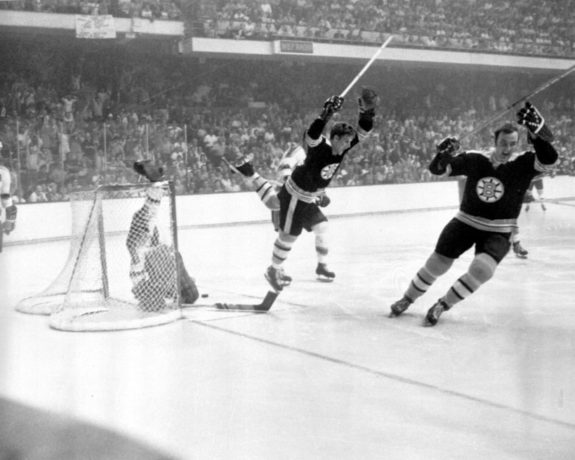
An argument can be made that Orr didn’t change the defenseman position as much as he revived the “rover” of the pre-NHL days. While the rover was a sixth skater in the early days of professional ice hockey, Orr’s tendency to lead or join the rush, combined with his ability to recover defensively with speed, served the same purpose.
Orr’s Offensive Output
During the nine seasons that Orr was relatively healthy (1966-67 through 1974-75), he averaged only 69 games. Despite the lack of games, he averaged almost 29 goals and 68 assists for 97 points. Had he scored 97 points in each of those nine years, he would have ranked in the league’s top seven every year, top four eight of nine years, and would have finished below his actual rank six of the nine seasons.
Related: Bobby Orr’s Landmark Season
In the six seasons between 1969-70 and 1974-75, Orr’s actual regular-season scoring placed him first, second, second, third, second, and first. He led the league in assists in 1969-70, 1970-71, 1971-72, and 1973-74. He finished second in assists in 1972-73 and 1974-75. He placed top 10 in goals in 1969-70 (8th-T), 1970-71 (8th-T), and 1974-75 (6th).
Orr’s Ownership of the Plus/Minus Statistic
The NHL started tracking the plus/minus statistic in 1959-60, but it only became an “official” statistic in 1967-68. The league actually had an official NHL Plus-Minus Award from 1982-83 through 2007-08. (It had a variety of names during that period, depending on what company sponsored it).
While many stat heads today dismiss plus/minus as a “dinosaur” number that doesn’t reflect a player’s true performance, it was considered a very important marker during Orr’s years in the league. And Bobby Orr was the plus/minus player of his day. Well, at least during his prime years. His sophomore year, Orr finished third in plus/minus. The following season he tied for first. And he would finish atop the league five of the next six seasons. (The lone exception was 1972-73, when he finished fourth, despite playing only 63 games.)
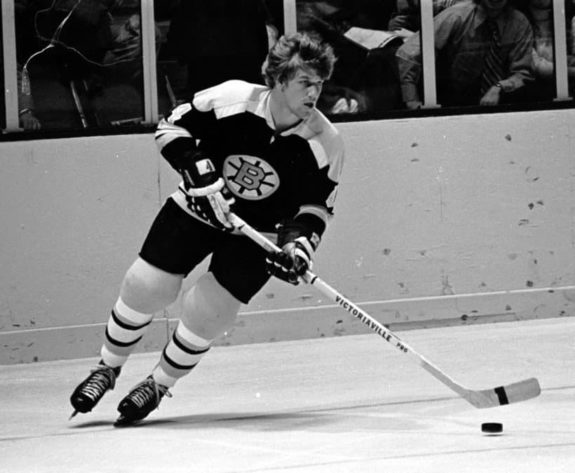
From 1967-68 through 1974-75, Orr was a cumulative plus-563, averaging plus-70 over the eight seasons. For his career, Orr was plus-582, second in NHL history to defenseman Larry Robinson’s plus-722. To be fair to Orr’s reputation, Robinson played 20 seasons and 1,384 games in the NHL, compared to 657 games for Orr. Neither registered a minus season in their careers.
Orr’s single-season plus-124 in 1970-71 is tops in NHL history, with Robinson close behind at plus-120 (1976-77). Orr recorded four of the top 15 plus/minus seasons in NHL history; Robinson appears on that list once. Robinson led the league in plus/minus one season, while Orr led (or tied for the lead) six seasons. If we subtract seasons in which the two players appeared in fewer than 35 games, Robinson averaged plus-36, while Orr averaged plus-63.
Awards and Trivia
Orr won the Calder Trophy his rookie year and was named to the All-Star Second Team. Despite his rookie status, he finished third in Norris voting and sixth in voting for the Hart Trophy. His sophomore season added his first of eight straight Norris Trophies and eight straight All-Star First Team selections. As if those nine trophies and All-Star selections weren’t enough, he added three Hart Trophies (1969-70, 1970-71, 1971-72), two Art Ross Trophies (1969-70, 1974-75), two Conn Smythe Trophies (1969-70, 1971-72), and a Pearson Award (1974-75). He also finished third in Hart Trophy voting four times and fourth in voting once.
Orr’s career may have been short, but it was colorful. Here are just a few of the fun facts from his days in the NHL:
- In August 1971, Orr signed a five-year deal worth $1 million. It was the first million-dollar contract in the history of the NHL. Interestingly, that $200,000 per year in 1971, when adjusted for inflation, would be about $1.3 million today. While that looks like a journeyman’s salary now, it nonetheless made Orr by far the highest-paid player at the time.
- The Bruins won only two Stanley Cups during Orr’s time with the team. And he scored the Cup-clinching goal both times.
- Those Cup-clinching goals, along with his magnificent play throughout both runs to the championship, made Orr the first two-time Conn Smythe winner.
- In 1971-72, Orr won three MVP awards: The Hart Trophy as regular-season MVP, the Smythe as playoff MVP, and he was also named MVP of the 1972 All-Star Game.
- In 1972, Orr was the first defenseman to be named All-Star Game MVP.
- On Nov. 15, 1973, Orr scored seven points (three goals, four assists) against the New York Rangers. At the time, it was the highest point total for a defenseman in a single NHL game.
- During the 1974-75 season, Orr set a record by scoring over 100 points for the sixth consecutive season. Gretzky broke that record with 14-straight 100+ point seasons, but no defenseman has come close.
- According to a story repeated in Stephen Brunt’s book “Searching for Bobby Orr,” Orr almost became the NHL’s first player/owner (partial ownership), some 25 years earlier than Mario Lemieux with the Penguins. Orr’s agent Eagleson reportedly never told him about the offer.
- Although Orr spent his last three seasons as part of the Chicago Black Hawks organization, he never accepted a paycheck from the team.
Orr’s last full season in the NHL was 1974-75. Although he played another 10 games with the Bruins the following year and had seasons with the Black Hawks of 20 games (1976-77) and six games (1978-79), he was effectively done after the Bruins lost to Chicago in the preliminary round of the 1974-75 playoffs.
He was coming off his sixth consecutive 100+ point season, his eighth consecutive Norris Trophy, his second Art Ross Trophy, and his first Pearson Award. In addition, Orr had set a personal-best of 46 goals and his 135 points that year, his second-highest total ever. That season he also played a career-high 80 games and led the league with 384 shots on goal. Had his knees been healthy, and had he played another half-dozen years in prime shape (to the ripe old age of 33), there’s no telling what the NHL record book would look like today.
Special Mention: Pelle Lindbergh
Pelle Lindbergh was a goalie for the Philadelphia Flyers for parts of several seasons in the first half of the 1980s. I didn’t include him among the top players whose careers were cut short because, frankly, his career never got a chance to really get rolling. Early in the 1985-86 season, Lindbergh died in a tragic one-car accident.
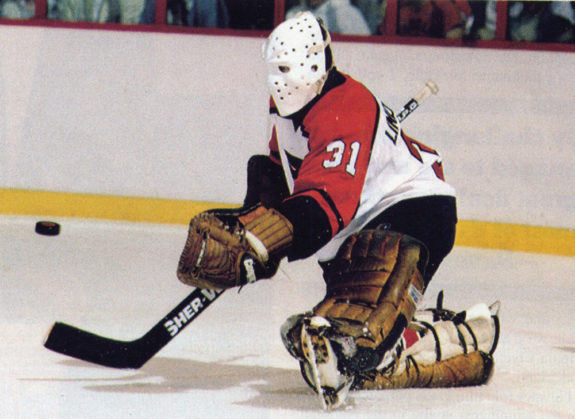
Lindbergh took the ice for the Flyers in eight games during the 1981-82 season, 40 in 1982-83, 36 in 1983-84, 65 in 1984-85, and only another eight games before his death in 1985. While many NHL goalies never reach his total of 157 games, his career was only beginning to rise. In 1984-85 he played 65 games, with a record of 40-17-7, allowing just three goals per game and stopping nine of every 10 shots.
Pelle Lindbergh was one of the top goaltenders in the world before his life was cut short in a tragic car accident in 1985.
—“Total Hockey: The Official Encyclopedia of The National Hockey League,” p. 1855.
Among goalies who appeared in at least 15 games in 1984-85, he was third in save percentage and fourth in goals against average. (His teammate Bob Froese was the only goalie to finish ahead of him in both statistics.) His 40 wins and individual stats would power him to an overwhelming victory in the Vezina Trophy voting and a third-place finish for the Hart Trophy. In the playoffs, his record that year was 11–3 in the first three rounds before the Flyers lost to Edmonton in the Final, four games to one.
Related: Pelle Lindbergh Remembered
When you consider how few goalies make an immediate impact at a young age in the NHL and how long goalies typically apprentice before becoming starters, Lindbergh can perhaps be described as a rising star who fell to Earth far too soon.
Wrap It, Ice It, and Let It Rest (for now)
While putting together this list, I had some rather spirited discussions with a number of my colleagues at The Hockey Writers. Their comments and suggestions led to a number of changes to and rearrangement of the list. Special thanks go to Tom Castro for his information on Tim Kerr, to John Kreiser for his passionate advocacy for Pavel Bure, and to Bruce Hollingdrake for his comments about Pelle Lindbergh.
That having been said, I take full and sole responsibility for the content and rankings in this article. Don’t blame my colleagues – they did their best to convince me to “come to the light.” I look forward to your comments in the conversation section that follows this post. Should you present an argument for which I have no counter, I certainly will give you full credit when I next revise this list!
Statistics from NHL.com, HockeyDB.com, and Hockey-Reference.com. Biographical information and additional statistics from “Total Hockey: The Official Encyclopedia of The National Hockey League,” (1st ed., 12998), the Hockey Hall of Fame, Wikipedia, and various other sources.
